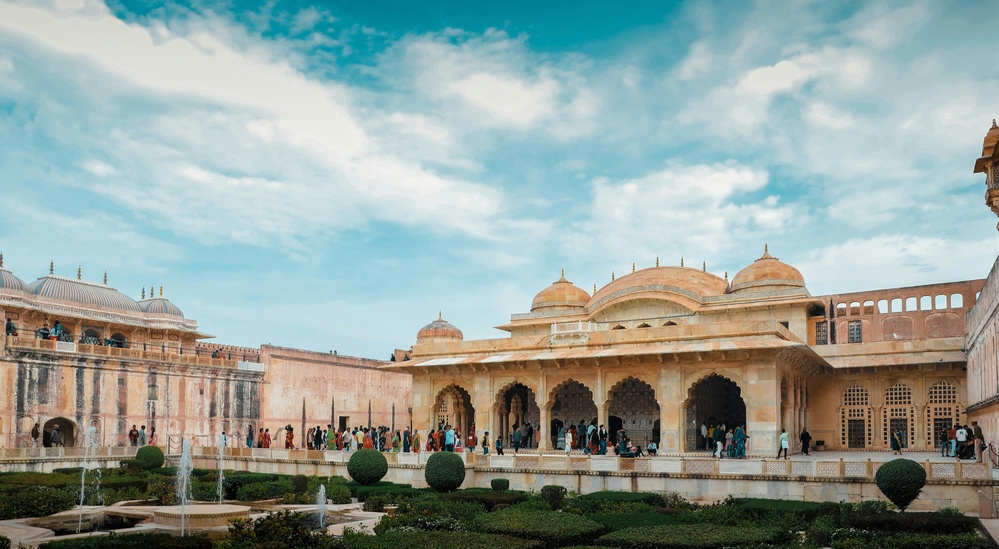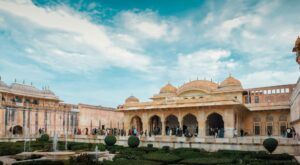
India, often called the land of spirituality, is a country where religion is deeply woven into everyday life. From ancient temples and sacred rivers to bustling pilgrimage towns and tranquil monasteries, religious tourism in India offers travellers a unique opportunity to explore diverse faiths, cultures, rituals, and centuries-old traditions in one journey.
What Makes Religious Tourism in India Special?
Religious tourism in India is not just about visiting temples or shrines. It is an immersive experience that allows you to witness grand festivals, ancient architecture, traditional music and dance rituals, and the unshakeable faith of millions of devotees. Here are some reasons why religious tourism in India is a must-experience:
1. Incredible Diversity of Religions
India is home to Hinduism, Islam, Sikhism, Buddhism, Jainism, Christianity, and many tribal faiths. Travelling for religious tourism exposes you to diverse beliefs, philosophies, and spiritual practices, deepening your understanding of human faith.
2. Architectural Grandeur and History
Most religious sites in India are architectural marvels, narrating tales of ancient dynasties, cultural transitions, and devotional artistry. Temples carved out of rocks, towering gopurams, intricate mosques, and serene monasteries leave every traveller awestruck.
3. Festivals and Rituals
Religious tourism in India offers a chance to witness colourful festivals such as Kumbh Mela, Diwali, Eid, Christmas, Buddha Purnima, Guru Nanak Jayanti, and Mahavir Jayanti. These festivals showcase vibrant processions, music, dances, lights, and deep-rooted traditions.
4. Spiritual Peace and Reflection
Many travellers seek religious tourism in India for inner peace and reflection. Meditating by the Ganga in Rishikesh, listening to Gurbani in the Golden Temple, or praying at Bodhgaya under the Bodhi tree offers spiritual solace unlike any other.
5. Boost to Local Economies and Communities
Religious tourism generates employment and supports local communities through homestays, guides, transport, shops, and local cuisines, fostering sustainable economic growth.
Top Destinations for Religious Tourism in India
Here are some major religious tourism destinations in India that attract millions of pilgrims and travellers every year:
- Varanasi (Uttar Pradesh): The spiritual capital of India, known for its ghats, Kashi Vishwanath Temple, evening Ganga Aarti, and centuries-old traditions.
- Amritsar (Punjab): Home to the Golden Temple (Harmandir Sahib), the holiest shrine of Sikhism, known for its divine beauty and community kitchen feeding thousands daily.
- Bodh Gaya (Bihar): The place where Lord Buddha attained enlightenment under the Bodhi Tree, making it the most revered Buddhist pilgrimage site.
- Rishikesh and Haridwar (Uttarakhand): Famous for Ganga Aarti, yoga, meditation centres, and being the gateway to Char Dham Yatra.
- Tirupati (Andhra Pradesh): Sri Venkateswara Temple is one of the world’s richest and most visited temples, attracting devotees from across the globe.
- Vaishno Devi (Jammu and Kashmir): A sacred cave temple dedicated to Goddess Vaishno Devi, nestled in Trikuta hills, visited by millions every year.
- Ajmer Sharif (Rajasthan): Dargah of Khwaja Moinuddin Chishti, an important pilgrimage site for Muslims and people of all faiths.
- Shirdi (Maharashtra): Home to the Samadhi Mandir of Sai Baba, attracting devotees seeking blessings and peace.
- Char Dham Yatra (Uttarakhand): The spiritual circuit of Yamunotri, Gangotri, Kedarnath, and Badrinath, believed to cleanse sins and attain moksha.
- Jagannath Puri (Odisha): Known for its famous Rath Yatra and the sacred Jagannath Temple, an important pilgrimage for Hindus.
- Meenakshi Temple (Madurai, Tamil Nadu): An architectural masterpiece dedicated to Goddess Meenakshi, known for its towering gopurams and vibrant rituals.
Types of Religious Tourism Packages in India
Depending on your interest and faith, you can choose from various religious tourism packages:
- Pilgrimage Tours: Covering sacred circuits like Char Dham, Jyotirlinga, Navagraha temples, or Buddhist circuits.
- Festival Tours: Designed around specific festivals like Kumbh Mela, Durga Puja, Navratri, or Ramadan celebrations.
- Spiritual Retreats: Focusing on yoga, meditation, and wellness combined with temple visits in places like Rishikesh, Varanasi, and Bodhgaya.
- Heritage and Temple Tours: Exploring architectural and cultural heritage across temples, churches, mosques, and monasteries.
Best Time to Plan Religious Tourism in India
The best time varies depending on your destination:
- October to March: Ideal for most pilgrimage sites due to pleasant weather.
- April to June: Preferred for Himalayan shrines like Kedarnath and Badrinath after they open post-winter.
- Festival Periods: Visit during specific festivals for a deeper cultural experience, ensuring you book accommodations well in advance.
Tips for a Fulfilling Religious Tourism Experience
- Respect local customs, dress codes, and photography rules at religious sites
- Book with reputed tour operators for a well-planned and comfortable experience
- Choose local guides to gain deeper insights into history, rituals, and significance
- Maintain cleanliness and avoid littering in sacred areas
- Check for special rituals timings or temple closing hours before visiting
Final Thoughts
Religious tourism in India is an enriching journey that goes beyond mere travel. It is a path to understand India’s spiritual soul, diverse cultures, ancient traditions, and human devotion in its purest form.
Whether you are seeking blessings at Vaishno Devi, peace at Bodh Gaya, architectural marvels at Meenakshi Temple, or the divine ambience of the Golden Temple, religious tourism offers experiences that rejuvenate your mind, body, and soul.
So, plan your next vacation to explore the spiritual and cultural treasures of India, and return with memories, blessings, and a deeper connection to humanity’s timeless quest for faith and peace.





